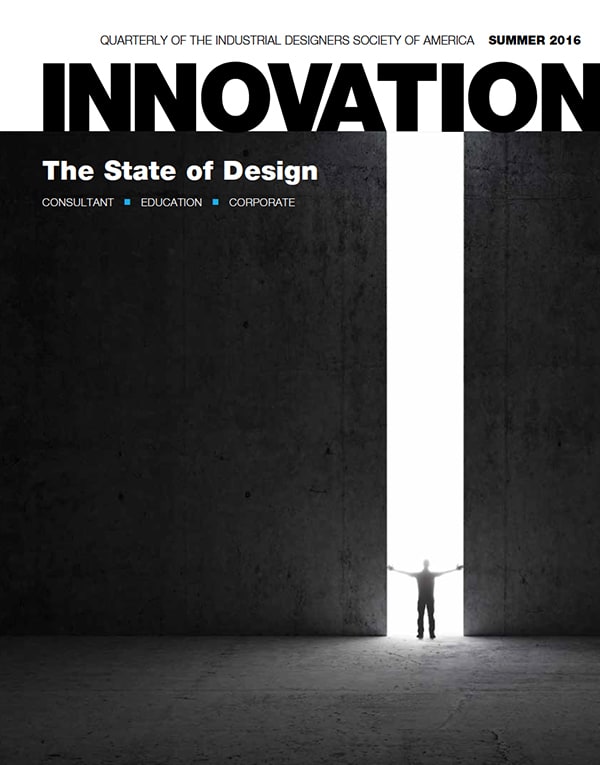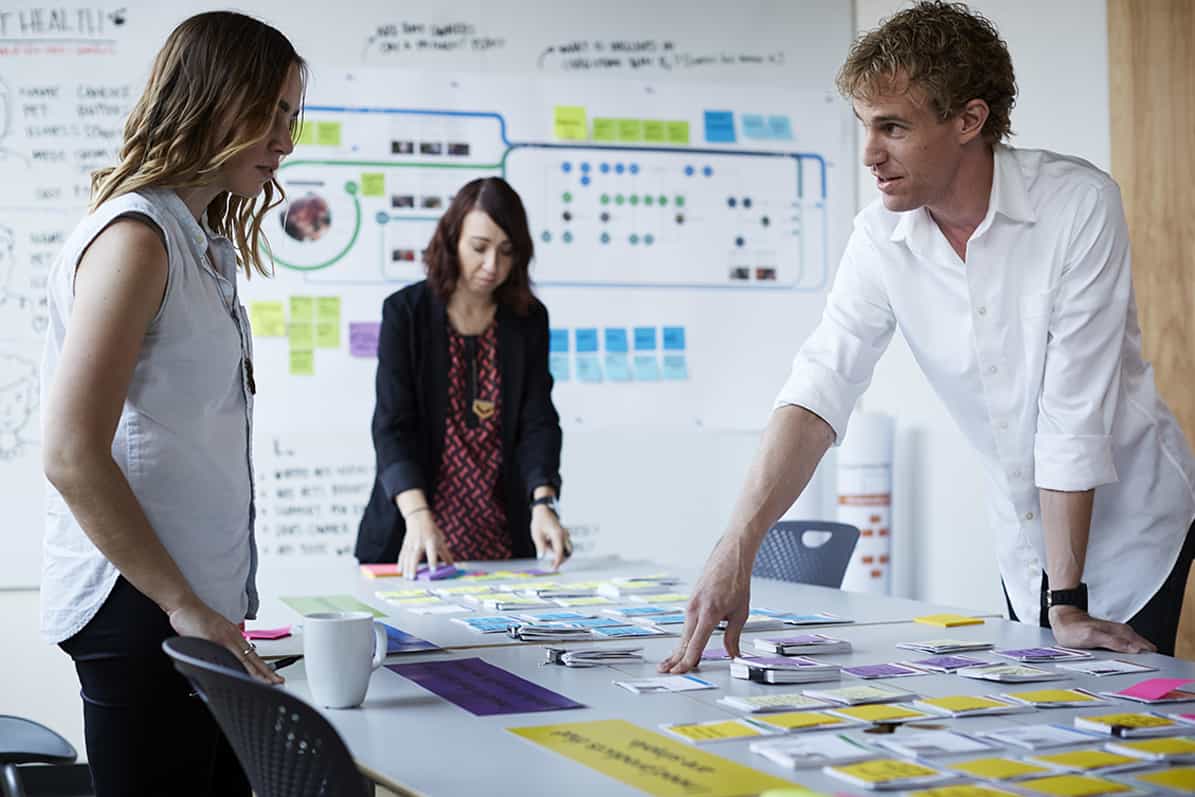THRIVE CEO & Co-Founder Jonathan Dalton is featured in this summers edition of INNOVATION, the Quarterly of the Industrial Designers Society of America. This quarters edition asked “What is the State of Design?” from three different perspectives—education, consultancies and corporations. Design finds itself at an important moment as it transforms before our eyes into the thing we always have hoped it would: the best way for business and society to THRIVE. Dalton offers three perspectives on how consultants will continue to have a positive impact for their client partners in “Is the Sky Falling?”
THE STATE OF DESIGN: IS THE SKY FALLING?
It is undoubtedly an excellent time for design, and as an industry we should all give ourselves a well deserved pat on the back for all the work done and progress made. The business of design is changing with in-house design becoming more common and the increasing adoption of design thinking as a strategic business tool to solve problems and drive profits. So what does this mean for design consulting? Has it had its day? Is the sky falling?
We think not. Our profession is indeed evolving, and design consultants always need to reconsider their value proposition to remain relevant. But more than ever, consultants have a significant and valuable role to play in helping their corporate peers succeed. The engagement model will need to evolve and change, and to be successful consultants will have to amplify the areas where they provide real strategic long-term value. The future is bright, but only if we collectively seize the opportunity business is giving us to demonstrate the value of our profession. Here are three key areas where consultants have, and will continue to have, an immediate and profound impact for their client partners:
Speed Is the New IP
Traditionally, consulting was built on the simple premise that clients could not solve their own problems. But the world has changed. The rate of change is the new dilemma, and we face unprecedented uncertainty with the status quo being constantly threatened by new entrants seemingly overnight. Companies are slowly having to walk away from the methods that got them where they are today. Competitive barriers of the past, such as manufacturing strength and distribution power, no longer guarantee a sustainable future. Industry boundaries are dissolving, and disruptive companies like Tesla, Uber and Airbnb are swiftly displacing incumbents and reshaping entire industries without having any traditional knowledge of the markets they have entered. The ability to adapt faster than your competitors is a growing source of competitive advantage, and having flexible and nimble teams at your disposal is critical to achieving this.
Today, achieving speed is the new IP, and design consulting firms are ideally positioned to deliver this and assist their corporate peers on the road to success. Expert teams assembled at a given moment to solve a particular problem are critical to achieving unstoppable momentum. Consultants can be deployed quickly against any given problem with a given capacity for focus, testing and learning quickly, making them a vital part of any organization’s competitive advantage. The key is integrating them in the right way.
The increasing importance of speed can be seen in the recent popularization of the notion of sprints: get traction quickly and fail fast. This is something that has not traditionally been associated with corporate teams, whose strength is an in-depth knowledge of the problem space and managing the day-to-day. Consultants can help in-house teams quickly get ideas built, test and learn, as well as bring a unique outside-in view that can help in-house teams be more future focused and take the long view on their category and business.
THE STATE OF DESIGN: Mind the Talent Gap
The war for talent is alive and well and fiercely contested in the design world. We are experiencing a massive shortage of qualified individuals despite the increasing number of people entering the field. Corporations are investing heavily in design thinking, building significant internal departments and making acquisitions to build capability quickly. This seemingly uncritical adoption of design thinking still has to deliver results at scale outside the already celebrated successes. It may not be the panacea for all. Does owning a chisel make you a master carpenter? We think not.
We are onboarding a new generation of practitioners, which is incredibly exciting, but the level of design maturity is concerning. In the interim, we will have to manage the gap in much-needed strategic thinking and seasoned tradecraft to make the promise of design thinking take hold long term. Recruiting scores of new graduates may bolster the corporate design ranks, but without strategic leadership at scale, teams stand to be rudderless. This is one of the biggest challenges facing our industry today. Will corporate America have the patience? Design and innovation are people-based initiatives, not quick fixes, and we are all aware of the obsessive focus on quarterly earnings and the short-term pressure to perform. How do we square this circle? Again, consultants have a valuable role to play.
The DNA of creative people has primarily lived in smaller firms with the DNA of corporations being that of an operator tasked with the delivery of consistent, predictable results. Closer partnership and greater integration with the development of shared working practices will reap benefits for both operating models. It should be a win-win, and is critical for design to fulfill its potential as a strategic business tool.
THE STATE OF DESIGN: Mindset Over Skill Set
The greatest value consultants can bring to their corporate peers is their mindset. Consulting design firms are made up of people with hyphenated backgrounds who can bring different perspectives from various specialties to connect the seemingly unconnected and illuminate opportunities for new value creation. Consultants have a panoramic view because they are typically generalists who work across analogous industries and problems. Mindset is, and will continue to be, a consultant’s biggest value.
Consultants and client partners both have to move away from the bring-me-the-solution mentality of deploying expertise, and move towards a new mindset that helps corporations add capabilities to their teams through intense collaboration, and learning by doing. All the world’s great athletes have coaches who assist them in reaching their peak performance. An outside-in view and the objectivity it brings is critical to their self-awareness and success. Consultants can offer their value in a similar way: helping corporate teams guard against myopia and help them escape the corporate gravity of their organization and empower them to think freely.
Let’s face it, design is hard and cultural change is even more challenging, and design thinking requires both. To make the most of this opportunity before us, we must truly partner to succeed.
About IDSA
Founded in 1965, the nonprofit Industrial Designers Society of America (IDSA) is one of the oldest and largest membership associations for industrial design professionals. IDSA has thousands of members in dozens of Student Chapters, Professional Chapters and Special Interest Sections in the United States and internationally.





